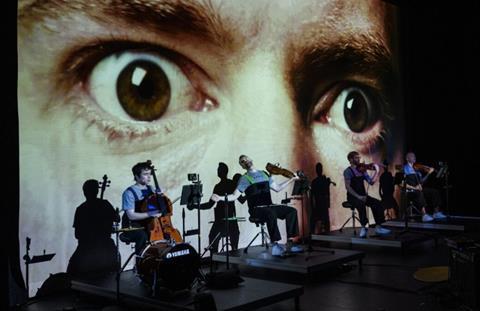Bruce Hodges hears the performance of Natacha Diels’s Beautiful Trouble at New York’s Roulette on 15 March 2024

Composer Natacha Diels has answered the prayers of anyone who has dreamt of seeing Jack Quartet cellist Jay Campbell sitting around a campfire and strumming a banjo. Among a flood of playful reveries – with Christopher Otto, Austin Wulliman and John Pickford Richards as collaborators – this episode seemed to embody the ‘cherished absurdity’ of Beautiful Trouble, Diels’s latest landscape.
In her evening-length piece, described as ‘an opera for string quartet’, Diels challenges the four players with requests for vocalising, percussion (for some reason, a small hotel bell lingered in the memory) and a set of slender reed tubes that evoked alphorns. The musicians’ usual stringed instruments were always in play, but set against a blizzard of choreographed head, neck and arm movements, with digital effects onscreen behind them.
With typical eagerness, aplomb and occasional deadpan wit, the Jack foursome plunged into the composer’s wide-ranging, intricately plotted melange of sound and images. Diels’s video proved a formidable presence in its own right, with flickering arrays of flamingos, ocean waves, animated characters and abstract digital patterns, throughout the 75-minute timespan.
Read: New String Quartet incorporating brain waves to be premiered by the Jack Quartet
Read: Jack Quartet receives Fellowship to explore music and neuroscience
Read: Jack appointed new Quartet in Residence at Mannes School of Music
Now and then I wondered what groups such as, say, the Guarneri or the Budapest quartets might have thought of this piece. But those notions soon gave way to contemplation of the string quartet universe in 2024, the technology available, and the way that composers and musicians grow from the latest developments and new tools; and there’s no question that the Jack Quartet is leading the way.
BRUCE HODGES










































No comments yet